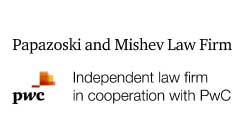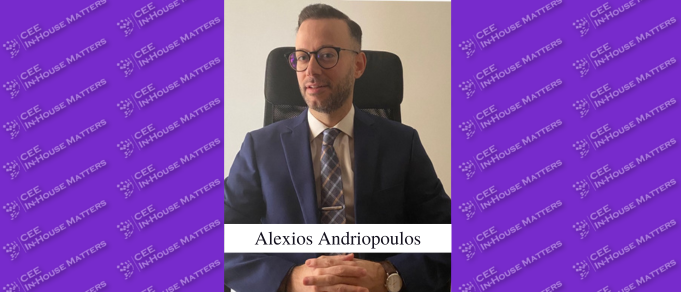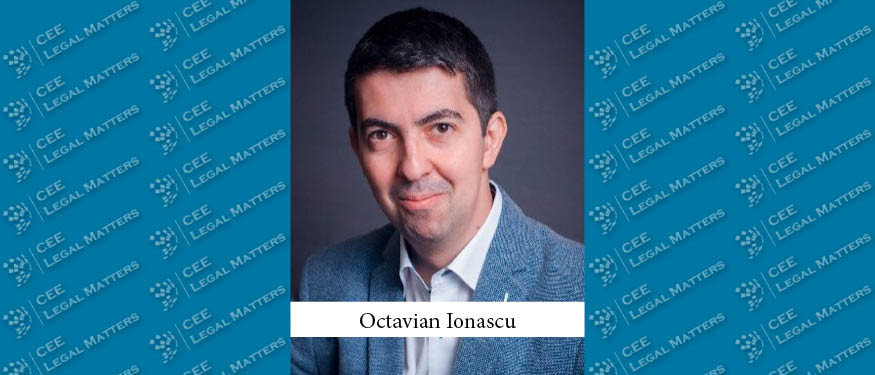The public procurement tool is intended to prevent foreign subsidies (as defined in Art. 3 FSR) from distorting competition in the internal market. This happens when companies are able to submit unduly advantageous bids that drive competitors unsupported by state funds out of the market, for example because they are subject to the strict prohibition of intra-EU State aid under Art. 107(1) TFEU. The need to counteract market-distorting subsidies from third countries is "particularly pronounced" in public procurement, since public contracts are financed with taxpayers' money.
Like the concentration tool, the procurement tool will create a new "world" of regulatory oversight for large-scale projects, requiring considerable flexibility and advance planning by both contracting authorities and bidders. It applies in principle to all procedures for the award of public contracts subject to EU procurement law, i.e. works, supply and service contracts as well as works and service concessions whose value reaches the uniform EU thresholds. However, there are also exempted procurement procedures, including the award of defence and security contracts covered by Directive 2009/81/EC and the award of contracts by negotiated procedure without prior publication on grounds of extreme urgency.From the point of view of contracting authorities, the public procurement tool of the FSR is ambivalent. On the one hand, a bid that benefits from foreign state support may be financially attractive. Accepting such an offer may be a welcome way for the authority or utility to stay within its budgetary constraints. On the other hand, influenced by political interests, contracting authorities may be inclined to support the local economy against foreign competition. It should be remembered, however, that the FSR does not only apply to companies based outside of the EU. Even bidders from the same Member State as the contracting authority (e.g. the local subsidiary of a construction group that also carries out projects in the United Arab Emirates) will have to show that they have not received any undue advantage from the foreign activities. For this reason, it is to be expected that the contracting authorities will see the short-term additional administrative burden imposed by the FSR rather than the long-term benefits of the new instrument for the European economy.
Obligation to notify
For the purposes of the FSR, a notifiable foreign financial contribution in a public procurement procedure arises where the following thresholds – on the one hand, quite high, and on the other hand extremely low – are reached:
- threshold for the contract value;
- threshold for foreign financial contributions ("FFCs").
Threshold for the contract value
The threshold for the contract value requires that the estimated contract value of the respective public tender be equal to or greater than EUR 250m (or EUR 125m in the case of tenders divided into lots). To put this in perspective, the cost of building a medium-sized hydropower plant with an annual production of some 90 GWh (meeting the needs of around 25,000 households) is about one third of this amount. The FSR is therefore aimed at very large projects, most of which are likely to be construction works or large equipment orders for public services such as rail transport or telecommunications. Nevertheless, the Commission may decide to open an ex officio investigation since 12 July 2023 in which case it may investigate foreign subsidies granted as far back as 12 July 2018. Such an investigation can be opened based on any information received by the Commission, including complaints. With respect to public procurement, ex officio investigations are limited to awarded contracts. However, such reviews will not lead to the cancellation of an award decision or the termination of a contract.
Threshold for FFCs
The threshold for FFCs, on the other hand, seems to be extremely low. The FSR is applicable if the main bidder – together with its subsidiaries without commercial autonomy, its holding companies as well as possible main subcontractors and suppliers involved in the same tender – has received EUR 4m or more in FFCs per third country over the previous three years. Given that any purchase of goods or services from a foreign public entity, as well as sales to public entities, qualify as FFCs – even if made on market terms – not much international activity will be required to meet this threshold. By way of illustration, a construction company (even if it only works on construction sites in the European Union) that purchases cement from a state-owned factory in Turkey is already a candidate for reporting under the FSR.
De minimis threshold for FFCs
The recently adopted Regulation implementing the FSR ((EU) 2023/1441, "Implementing Regulation") provides a de minimis threshold of EUR 1m below which FFCs need not be disclosed in a notification. It follows that only those FFCs equal to or in excess of EUR 1m individually granted to the recipient by a third country in the three years preceding the notification and that fall into the categories of foreign subsidies that are most likely to be distortive (i.e. rescue and restructuring subsidies, unlimited state guarantees, certain types of export financing, or those that enable an unduly advantageous bid to be made) need to be notified. If the contribution does not fall under these categories, it only needs to be described in a summary table (described further below).It is therefore very likely that the new tool will play an important role in all large public procurement procedures in the EU. Both contracting authorities and contracting entities, as well as potential bidders, whether based inside or outside the EU, need to be aware of this.
Obligation to declare
If only the threshold for the contract value is exceeded, while the FFCs from no third country reach EUR 4m, a declaration must be submitted instead of a notification, also as of 12 October 2023. If companies are required to make a declaration that they have not received any notifiable FFCs, they must still provide a summary description of the public procurement procedure, information on the notifying parties and a list of all FFCs received. Those FFCs valued below EUR 1m but above the value specified in the Commission's State aid de minimis regulation can be reported in an aggregate format. In addition, if the total amount per third country for the preceding three years is less than the amount specified in the State aid de minimis regulation (currently at EUR 200,000), they do not need to be included in the declaration at all.
Allowance vs. subsidy
The distinction between "FFCs" and "third-party subsidies" is fundamental to the scope of obligations and legal consequences under the FSR. FFCs can be provided to a company in a variety of ways, including interest-free loans, unlimited guarantees, compensation payments, tax benefits, tax credits or direct grants. The concept is very broad.A "third-country subsidy", on the other hand, is a financial contribution that comes directly or indirectly from a third country, is limited to one or more enterprises or economic sectors, and confers an advantage on the enterprise engaged in an economic activity in the EU. This definition is thus similar to "state aid" within the meaning of Art. 107 (1) TFEU. Accordingly, a financial contribution does not confer a subsidy-relevant advantage if the assessment based on the reference values shows that the company would also have received this advantage under normal market conditions.
Best to be prepared
The public procurement tool will become fully applicable nine months after the entry into force of the FSR, i.e. from 12 October 2023. From that date, bidders will have to submit the FS-PP form (a standard form provided for in the Implementing Regulation) and await the Commission's approval. Depending on whether the procedure is a (single-stage) open procedure or a (multi-stage) negotiated procedure with prior publication, the notification or declaration must be submitted once (with the bid) or several times (with the request to participate and then again with the bid). In the case of framework agreements, the notification requirement applies only to the initial procurement procedure leading to the framework agreement and not to subsequent call-off procedures.Monitoring FFCs only from that date would certainly be too late. As was described above in the context of the concentration tool, meeting the requirements of the FSR will require, among other things, global counterparties attributable to non-EU governments and tax exemptions used abroad to be identified, and a good overview of all financial assistance received abroad, e.g. during the Covid-19 crisis. The main contractor must have this information not only for itself, but also for its main subcontractors and suppliers, for example.Notifications and declarations in public procurement procedures must be submitted to the contracting authority or contracting entity by the economic operator, or, in the case of groups of economic operators, by the main subcontractors and main suppliers, or by the main contractor or main concessionaire on its behalf and on behalf of all the notifying parties (as referred to in Art. 2(3) of the Implementing Regulation (EU) 2023/1441). Each notifying party is solely responsible for the accuracy of the information related to the FFCs granted to it.Once the notification or declaration has been submitted, the contracting authority or contracting entity must immediately transmit the notification or declaration to the Commission. The Commission's investigation procedure is again divided into two phases (as in the M&A tool). There is a preliminary review, which consists of requests for information and inspections. If, after the preliminary review, the Commission concludes that there are sufficient indications that a bidder has been granted a distorting foreign subsidy, it will open an in-depth investigation. An in-depth investigation is concluded with the Commission adopting one of the following decisions with respect to the notified FFCs: (i) a decision not to raise objections; (ii) a commitment decision; or (iii) a decision to prohibit the award of the contract.The Commission may also clear a transaction that it would otherwise prohibit under the FSR based on a balancing of negative and positive effects (an option that is not available under the EU merger control rules). A positive effect could relate to an EU policy objective (e.g. environmental protection, digital transformation, job creation and promotion of R&D).Failure by the main contractor to provide this information in a timely manner will result in exclusion from the tender (cf. Art. 29(3) of the FSR) and may lead to severe financial penalties under Art. 33 of the FSR. From the bidder's perspective, it is therefore crucial to prepare for the application of the new tool well in advance. In practice, it will be impossible to comply with the notification requirements in the relatively short period of time in which bids must be prepared. This is particularly true in the start-up phase of the new tool, since all FFCs received in the last three years prior to the call for tenders are reportable. We expect that, over time, at least multinational companies with significant non-EU business that regularly participate in high-volume tenders will need to establish specific foreign subsidy monitoring programmes, similar to know-your-client or supplier monitoring programmes.
Choice and design of procedure
Similarly, contracting authorities and contracting entities should plan well in advance how they intend to deal with the new tool. Their obligations are not limited to informing potential bidders of the need to submit a declaration on FFCs and to forward these notifications to the Commission without delay. Rather, it is in the interest of contracting authorities to ensure that bidders complete and submit the relevant information as early as possible. Their incentive to do so is based on a number of considerations.First, the tool may have a serious impact on the timeline for awarding the contract (the procurement process may continue during the review, but the contract may not be awarded). While the deadline for the Commission's preliminary review (20–30 working days from receipt of a complete notification) will not normally pose a problem for projects of this size, since the mandatory deadlines under the Procurement Directives will normally be longer, the same cannot be said for the deadline in an in-depth investigation. A hundred and ten to 130 working days (not weekdays) is beyond the usual timeline for the selection stage of public tenders. To reduce the time needed for the process as much as possible, it is advisable to start early.Contracting authorities and contracting entities may also consider the FSR deadlines as a factor in the design of their procedures. For example, a restricted procedure (rather than an open procedure) may be better suited to manage the risk of extensive Commission investigations, since these risks naturally increase with the number of bidders (see in this respect the specific rules on multi-stage procedures in Art. 30(6) of the FSR).
Sanctions
In view of the above, some contracting authorities or contracting entities may be tempted to dispense with the obligation to notify the Commission. However, this would not be advisable for several reasons. First, if the contracting body is an economic operator (as defined in the Procurement Directives) in its own right (e.g. a public railway company purchasing rolling stock for its operations), it may itself be subject to financial penalties under Art. 33 of the FSR.Second, the Union courts are likely to consider that the standstill obligation under Art. 32(1) of the FSR is directly effective, similar to the standstill obligation under Art. 108(3) TFEU, and that Member States are obliged to take all necessary measures to enforce this provision. For this reason, an unsuccessful bidder (who believes that its competitor's more advantageous bid was the result of foreign subsidies) may not only complain to the Commission but will probably also be entitled to seek a post-contractual remedy in proceedings before national procurement authorities and courts, such as compensation for damages suffered as a result of the breach of the standstill obligation, or even to have the contract declared null and void. This remedy is likely to be available not only where a contract is awarded during the Commission's investigation, but also where the Commission's investigation has not even started because the Brussels authority has not been properly notified of the FFCs in question.This does not necessarily mean that contracting authorities are relegated to the role of bystanders once the Commission has opened an in-depth investigation. The wording of the FSR (e.g. Art. 31(1) leg cit) indicates that the Commission expects to be able to solve most of the competition problems identified by the procurement tool based on commitments offered by the parties to the proceedings. These commitments must, in principle, be submitted to the Commission within a maximum of 50 working days from the opening of an in-depth investigation. Contracting authorities may be well advised to ensure that they have a say in these discussions. For example, the Procurement Documents could require bidders, as part of their pre-contractual obligations, to use their best efforts to obtain the FSR approval as soon as reasonably possible (or even within a specified timeframe), and to involve the contracting authority in the design of the commitments. Models for such clauses can be found in M&A transactions, where sellers often require equal participation in remedy discussions. If a bidder fails to comply with such obligations (e.g. by failing to offer suitable commitments within a specified timeframe), this could be considered a failure to comply with the requirements set out in the Procurement Documents, justifying a refusal to award the contract to that bidder.Given the importance of private enforcement in the area of public procurement, it is likely that many of the legal issues relating to the above possibilities for mitigating the risks to public procurement arising from the FSR will quickly be raised in proceedings before the authorities and courts of the Member States and will be the subject of preliminary rulings by the ECJ under Art. 267 TFEU.
Outlook
Despite the clarification of the procedural steps and practicalities of the FSR system as well as the provision of standard forms in the Implementing Regulation detailing the information to be provided by companies in the context of public procurement ("FS-PP"), not to mention the publication of the first Q&As, questions remain unanswered. For this reason, the Commission has already announced that it will publish (further) interpretative guidance no later than one year after the date of application. In addition, the publication of guidance on some aspects of the FSR is planned. However, due to the need for extensive consultation with stakeholders and Member States, publication is not expected before 12 January 2026. In the meantime, the Commission's answers in EU State aid legislation and case law can be used to resolve various questions of interpretation.
By Hanno Wollmann, Partner, Johannes Stalzer, Counsel, and Felix Schneider, Attorney at Law, Schoenherr





















